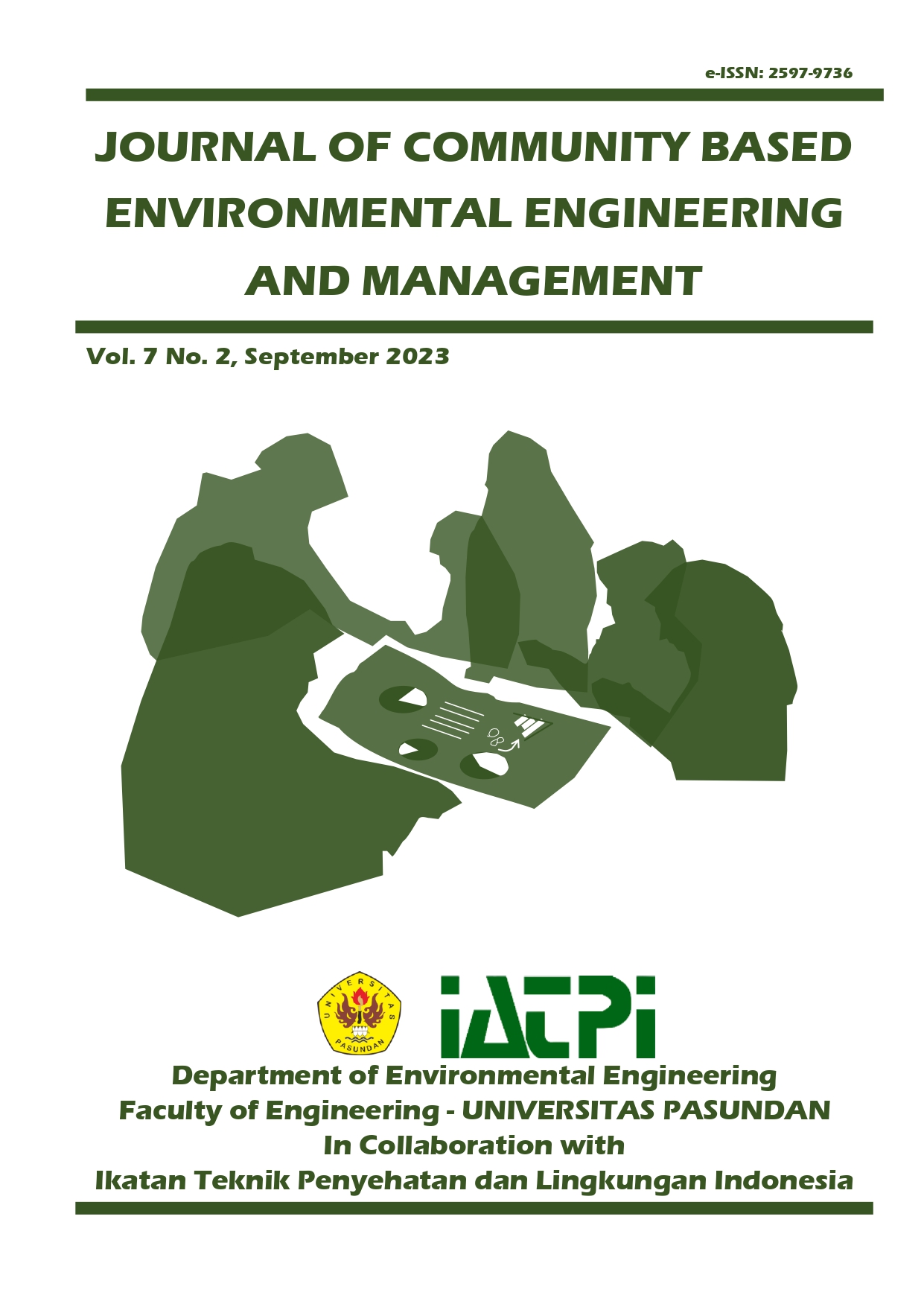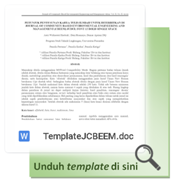The Effect of The L/G Ratio on SO2 Removal Efficiency in Seawater Absorption Columns
DOI:
https://doi.org/10.23969/jcbeem.v7i2.9083Keywords:
efficiency, natural seawater, SO2, Steam Turbine Power Plant, SWFGDAbstract
Steam Turbine Power Plants are widely known as one of the primary sources of electricity generation, utilizing coal combustion. However, this process leads to the emission of air pollutants, including sulfur dioxide (SO2), which is considered harmful. To mitigate this issue, Seawater Flue Gas Desulfurization (SWFGD) has been implemented as a control device to reduce the concentration of SO2. Previous studies on SWFGD have mainly focused on operational factors such as gas flow rate and liquid flow rate using artificial seawater as the absorbent. However, there is a lack of research on utilizing natural seawater, particularly from Indonesia, as the absorbent. Hence, this study aims to determine the efficiency of SO2 removal using Indonesia's natural seawater and investigate the influence of varying the L/G (liquid-to-gas) ratio on the overall removal efficiency. The study employed a packed tower reactor with a counter-current flow configuration. The gas concentration of SO2 used in this study is 1500 ppm, which is adjusted to match the existing conditions in the Steam Turbine Power Plant. The variations in seawater flow rate range from 150 to 250 liters/hour, while the variations in gas flow rate range from 1 to 10 m3/hour at 30oC. So, the L/G ratio value is within the range of 20.9 to 104.5. The results indicated that an increase in the L/G ratio corresponded to an increase in the total removal efficiency. The highest achieved efficiency reached 98.5%, while the lowest efficiency recorded was 84%.
Downloads
References
Bahrin, D., Susanto, H., & Subagjo. (2015). Penyusunan Kriteria Pemilihan Proses Flue Gas Desulfurization. Prosiding Seminar Nasional Teknik Kimia “Kejuangan” Pengembangan Teknologi Kimia Untuk Pengolahan Sumber Daya Alam Indonesia, 4, 1–9.
Flagiello, D., Erto, A., Lancia, A., & Di Natale, F. (2018). Experimental and modelling analysis of seawater scrubbers for sulphur dioxide removal from flue-gas. Fuel, 214(November 2017), 254–263. https://doi.org/10.1016/j.fuel.2017.10.098
Flagiello, D., Natale, F. Di, Lancia, A., & Salo, K. (2021). Effect of seawater alkalinity on the performances of a marine diesel engine desulphurization scrubber. Chemical Engineering Transactions, 86(July), 505–510. https://doi.org/10.3303/CET2186085
Han, M., Hao, S., Zhou, J., & Gao, L. (2018). Design and experimental study on desulphurization process of ship exhaust. IOP Conference Series: Earth and Environmental Science, 121(3), 0–6. https://doi.org/10.1088/1755-1315/121/3/032005
Hitachi, M., & Systems, P. (2019). Seawater FGD Study 1 . MHPS AQCS System Outline.
Lee, J.-T., & Che, M.-C. (2011). Using Seawater to Remove SO2 in a FGD System. Waste Water - Treatment and Reutilization. https://doi.org/10.5772/16179
Oikawa, K., Yongsiri, C., Takeda, K., & Harimoto, T. (2003). Seawater flue gas desulfurization: Its technical implications and performance results. Environmental Progress, 22(1), 67–73. https://doi.org/10.1002/ep.670220118
Van Duc Long, N., Lee, D. Y., Kim, M. J., Kwag, C., Lee, Y. M., Kang, K. J., Lee, S. W., & Lee, M. (2021). Desulfurization scrubbing in a squared spray column for a 720 kW marine diesel engine: Design, construction, simulation, and experiment. Chemical Engineering and Processing - Process Intensification, 161(November 2020), 108317. https://doi.org/10.1016/j.cep.2021.108317














